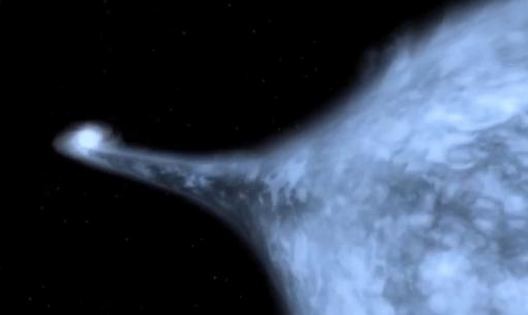A hypervelocity star known as US 708 is tearing through the Milky Way at some 1,200 kilometers per second, making it the fastest moving star ever recorded.
Also known as SDSS J093320.86+441705.4 and HVS 2, the hot subdwarf was observed by a team led by Dr. Stephan Geier from the European Southern Observatory in Garching, Germany as it blasted through the Milky Way en route to exiting our galaxy.
US 708 will leave the Milky Way in some 25 million years. It will transform into a white dwarf star over that immense period of time.
US 708 is a compact helium star formed after a close and massive companion star stripped away almost all of its hydrogen.
Dr. Geier and his colleagues observed US 708 with the Echellette Spectrograph and Imager instrument on the 10 meter Keck II telescope to measure its distance and velocity along our line of sight.
They concluded the trajectory of US 708 means the Milky Way's central supermassive black hole couldn't be the source of the star's extreme velocity. They also said unlike other hypervelocity stars, US 708 is a rapidly rotating, compact helium star likely formed by interaction with another star in close proximity.
Scientists believe US 708 could have originally been located in an ultra-compact binary system. Here, it transferred helium to a massive white dwarf companion.
This transfer triggered a thermonuclear explosion of a type Ia supernova.
This indescribable explosion flung US 708 from the binary system and hurled it at the fantastic speed now observed by astronomers.
"US 708 does not come from the galactic center. We don't know any other supermassive black hole in our galaxy. One needs one of those. A smaller, stellar-mass black hole formed by the collapse of a massive star can't do the job," said Dr. Geier to Discovery News.
Scientists said US 708 is the only one of about 20 similar runaway stars being hurled out of the Milky Way by a supernova explosion, said a story in Science News.



























